CNC Prototyping Services for Precision and Speed
At CNMP, we specialize in CNC prototyping services that help engineers and product developers transform ideas into functional parts with speed and accuracy. From aluminium and stainless steel to plastics and titanium, our rapid CNC machining capabilities deliver prototypes that meet tight tolerances and industry standards.
What is CNC Prototyping?
CNC prototyping is the process of creating functional or visual prototypes using computer numerical control (CNC) machining. Unlike 3D printing or manual prototyping, CNC prototyping relies on subtractive manufacturing—cutting material from a solid block of metal or plastic to achieve the final geometry. This method provides superior precision, tight tolerances, and a wide choice of materials, making it ideal for industries that demand accuracy and performance. Whether you need a single functional model, a proof-of-concept part, or low-volume pre-production components, CNC prototyping ensures speed, repeatability, and consistent quality.
Why CNC Prototyping Matters
Prototyping is a critical step in product development. By machining parts directly from production-grade materials, CNC prototyping allows engineers and designers to:
Validate design concepts with real-world performance testing.
Assess manufacturability before committing to mass production.
Shorten development cycles with quick turnaround times.
Reduce risks and costs associated with design errors.
Benefits Compared to Other Prototyping Methods
While 3D printing and other rapid prototyping technologies are useful for early-stage modeling, CNC machining offers unique advantages:
Material flexibility: Metals like aluminum, titanium, stainless steel, and engineering plastics.
Superior accuracy: Tolerances down to ±0.005 mm.
Functional prototypes: Parts can withstand real-world stress and testing.
Production relevance: Processes and materials closely mirror final manufacturing.
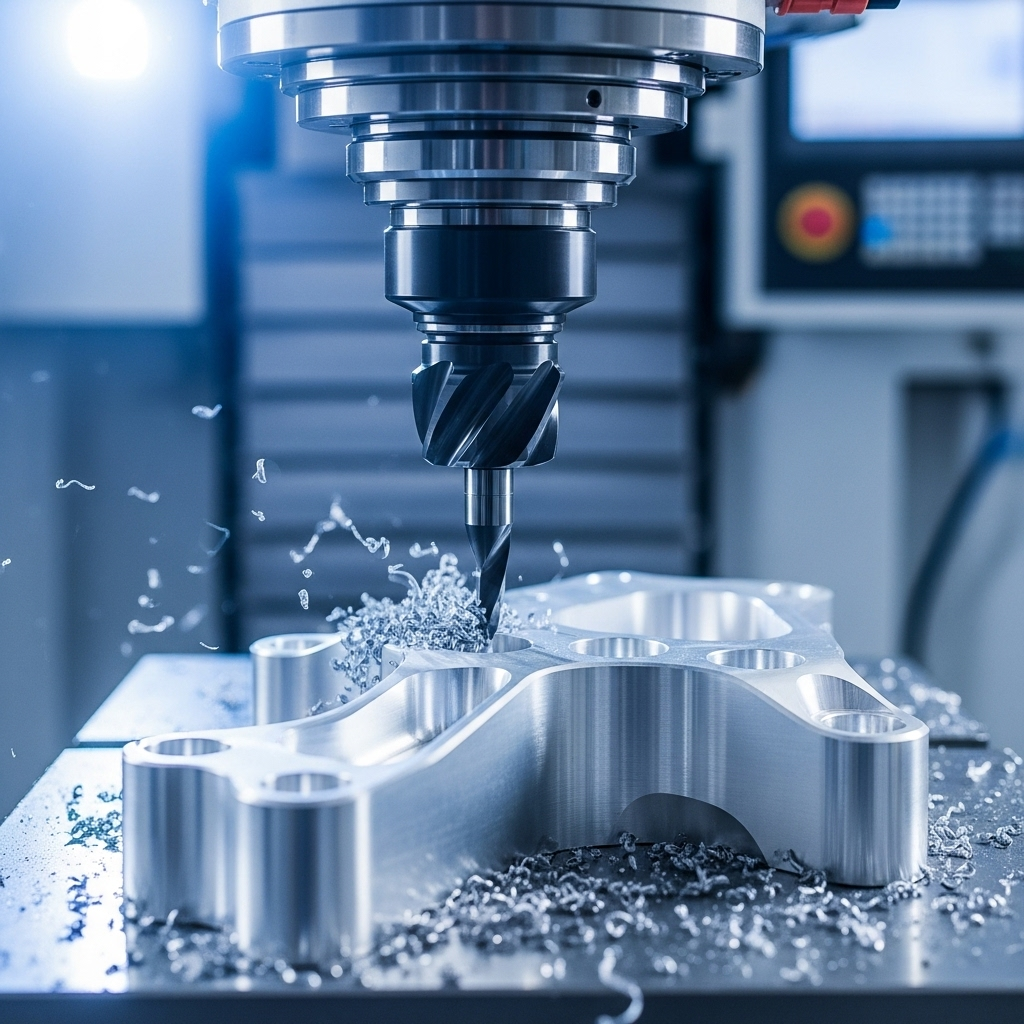
CNMP’s CNC Prototyping Capabilities
At CNMP, our CNC prototyping services are designed to help customers quickly transform ideas into tangible, high-precision parts. Whether you are developing a functional prototype, testing design feasibility, or preparing for mass production, our capabilities ensure consistent quality and flexibility.
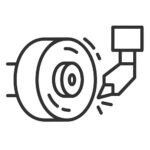
Rapid Prototyping with High Precision
Using advanced 3-axis, 4-axis, and 5-axis CNC machining centers, we deliver prototypes with tight tolerances and accurate geometries.
Ideal for functional testing and validation before scaling to production.

Wide Range of Materials
From metals such as aluminum (AL-6061, AL-7075), stainless steel, titanium alloys to plastics like ABS, POM, and Nylon, we support prototyping in materials close to your final production requirements.

Complex Geometries & Customization
Our CNC prototyping services excel at handling intricate geometries, undercuts, and fine surface finishes.
This ensures prototypes closely reflect the final part, reducing design risks.

Scalable to Low-Volume Production
Beyond single prototypes, CNMP supports low-volume CNC machining runs, enabling seamless transition from prototype validation to pilot production.
Materials We Work With
When developing prototypes, selecting the right material is crucial. Customers often face questions like: “Can my prototype reflect the performance of the final product?” or “Is it possible to balance cost and mechanical accuracy at the prototyping stage?”
At CNMP, we support a wide range of metals and plastics, ensuring your prototypes meet both functional testing and design validation requirements.

Aluminum (AL-6061, AL-7075, AL-2024)
Why it matters: Aluminum is lightweight, machinable, and widely used for functional prototypes.
Common challenge: Balancing strength vs. machinability. AL-7075 offers higher strength, while AL-6061 is more cost-efficient.
Typical applications: Automotive brackets, aerospace housings, structural prototypes.
Stainless Steel (SS 304, SS 316, SS 303)
Why it matters: Provides durability and corrosion resistance, useful for prototypes in harsh or medical environments.
Common challenge: Higher machining difficulty and cost compared to aluminum.
Typical applications: Medical device housings, fluid handling components.

Titanium Alloys (Ti-6Al-4V)
Why it matters: High strength-to-weight ratio and biocompatibility.
Common challenge: Expensive and difficult to machine, but essential for aerospace or medical validation.
Typical applications: Aerospace turbine prototypes, surgical implants.
Engineering Plastics
Why it matters: Cost-effective and suitable for early-stage prototyping.
Common challenge: Customers often wonder if plastic prototypes are precise enough. Modern CNC machining ensures tight tolerances even with plastics.
Typical applications: Consumer electronics housings, low-load mechanical components.

Special Materials (Copper, Brass, Composites)
Why it matters: Some prototypes require electrical conductivity (copper) or aesthetic finishes (brass).
Common challenge: Surface finishing and machining precision.
Typical applications: Heat sinks, connectors, decorative prototype parts.
Industries Served
CNC prototyping plays a vital role across industries where speed, accuracy, and material flexibility are critical to validate new designs before mass production. Customers often ask: “Can my prototype reflect the performance of the final part?” or “How quickly can I test different design iterations?” — CNC prototyping provides the answer.
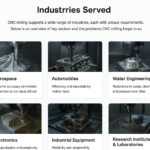
Aerospace
Key needs: High-precision prototypes for complex components like turbine housings, brackets, or structural parts.
Customer focus: Material validation (aluminum, titanium) and testing under real-world stress conditions.
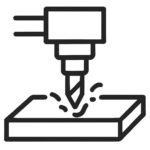
Automotive
Key needs: Rapid prototypes for functional testing, from engine parts to lightweight structures.
Customer focus: Balancing speed of iteration with maintaining tight tolerances, often using aluminum and composites.
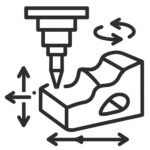
Medical Devices
Key needs: Prototyping of surgical instruments, implants, and device housings.
Customer focus: Biocompatibility (titanium, stainless steel) and ensuring prototypes can pass early-stage testing.

Consumer Electronics
Key needs: Plastic and metal prototypes for housings, connectors, and functional assemblies.
Customer focus: Surface finish, dimensional accuracy, and ability to move quickly from design to test fit.

Research & Development Labs
Key needs: Single-run or small-batch prototypes for proof of concept and academic testing.
Customer focus: Flexibility in materials and the ability to manufacture highly complex geometries without long lead times.
CNC Prototyping Gallery
Prototyping is not just about making a part — it’s about testing functionality, fit, and manufacturability before moving into full-scale production. Below are examples of CNC prototype parts we’ve produced for various industries.
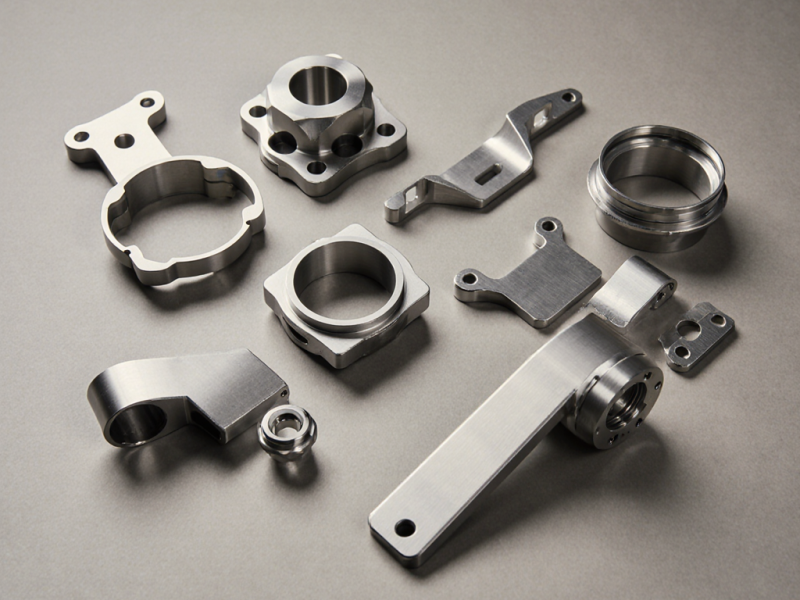
Aerospace Prototypes
Structural brackets and lightweight housings machined in aluminum and titanium.
Focus: achieving tolerances suitable for stress-testing and wind tunnel experiments.
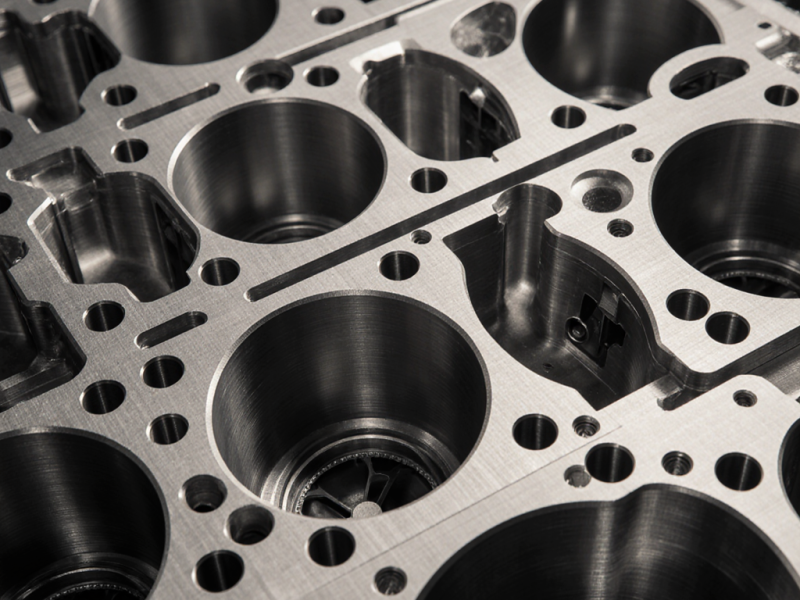
Automotive Prototypes
Engine housing components, gear prototypes, and lightweight frame parts.
Focus: validating durability and performance before mass production.
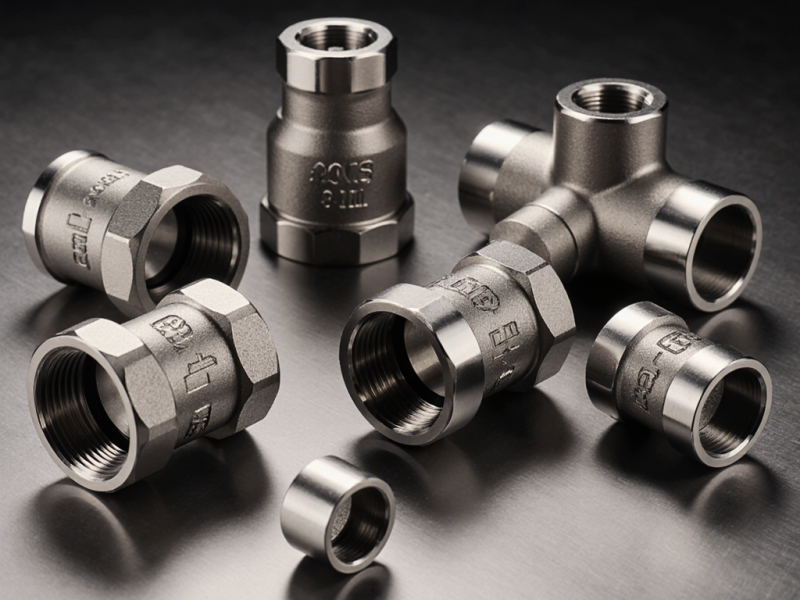
Medical Device Prototypes
Custom implants, surgical tool handles, and device casings.
Focus: biocompatibility and repeatability for regulatory testing.
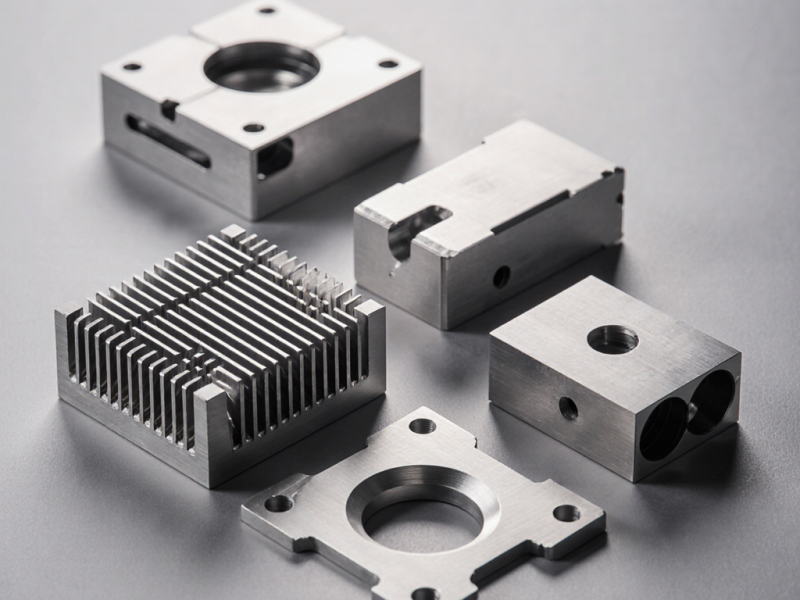
Consumer Electronics Prototypes
Precision-machined aluminum casings, connectors, and enclosures.
Focus: dimensional accuracy and cosmetic surface finishes for early-stage testing.
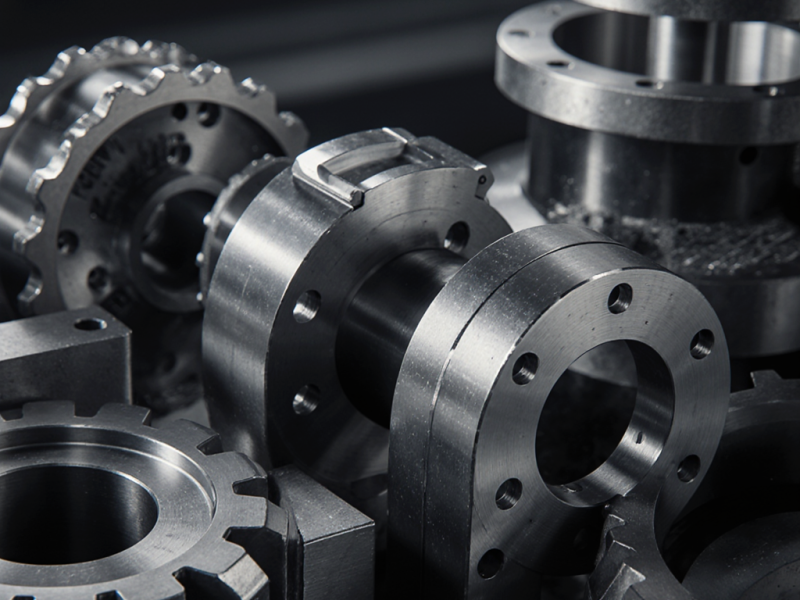
R&D / Lab Prototypes
One-off complex geometries, fluid channels, and functional assemblies.
Focus: flexibility in design iteration and fast turnaround.
Why Choose Us for CNC Prototyping?
Every prototype we produce goes through rigorous quality control to ensure it meets your specifications. We provide CMM inspection reports, surface roughness measurements, and material certificates on request, ensuring full traceability—critical for aerospace, medical, and regulated applications. Clear documentation accelerates design validation, simplifies regulatory review, and gives you confidence that prototypes align with final production standards.
Fast Turnaround for Rapid Iteration
Our CNC prototyping services are designed to shorten your product development cycle. By reducing lead time, we help you validate designs and move to production faster.
Precision Across Materials
From aluminum and stainless steel to titanium and engineering plastics, our machining centers deliver consistent accuracy. This ensures that every prototype reflects the intended function and tolerances.
Flexibility in Design Changes
Prototyping often involves frequent revisions. Our flexible CNC workflow allows quick adaptation to new drawings, updated specifications, or design adjustments without unnecessary delays.
Industry-Specific Expertise
Whether it’s aerospace prototypes, medical device components, or automotive test parts, we understand the unique requirements of each industry and provide prototypes that meet critical standards.
Bridge to Mass Production
Our CNC prototypes are not only proof-of-concept models but also production-ready samples. This helps you seamlessly transition from R&D to full-scale manufacturing.
Quality Assurance & Documentation
Every prototype we produce goes through rigorous quality control to ensure it meets your specifications. We provide CMM inspection reports, surface roughness measurements, and material certificates on request, ensuring full traceability—critical for aerospace, medical, and regulated applications. Clear documentation accelerates design validation, simplifies regulatory review, and gives you confidence that prototypes align with final production standards.
FAQs about 5-Axis CNC Machining
A: Lead times depend on complexity, material availability, and order volume. For standard aluminum or plastic prototypes, delivery can be as quick as 5–7 working days. Complex 5-axis CNC prototypes may require 10–15 days.
A: Our CNC prototyping achieves tolerances up to ±0.01 mm. This ensures prototypes match production-level precision, helping you test fit, functionality, and performance before scaling up.
A: We machine prototypes from aluminum (6061-T6, 7075), stainless steel (304, 316), titanium, brass, and plastics like PEEK, ABS, and Delrin. The material choice depends on whether the prototype is for functional testing, cosmetic review, or field testing.
A: Yes. CNC machining is flexible for iterative design. We can accommodate new CAD files and revised specifications without restarting the entire process, reducing delays and costs.
A: Every prototype undergoes CMM inspection, dimensional checks, and optional surface finish verification. This provides confidence that once you move to production, the results will remain consistent.
A: Every part undergoes CMM inspection, surface roughness testing, and dimensional checks to confirm it meets specifications before shipment.
Get a Quote for Your CNC Prototype Today
Ready to turn your design into a functional prototype?
Our CNC prototyping services support industries from aerospace and medical devices to automotive and research labs. Simply upload your CAD files or project specifications, and our engineering team will review your requirements and provide a tailored quotation.
Fast response within 24 hours
Support for low-volume prototypes and bridge production
Wide range of materials and tolerances available
NDA support for confidential projects
👉 Use the form to share your project details and get started.
